OK, so here we go. What I’m really asking when I’m listening in a room at a show, and what you really want to know is how does the overall system sound? So, this post covers three rooms that have to be mentioned because of the overall quality of the sound.
PS Audio Room
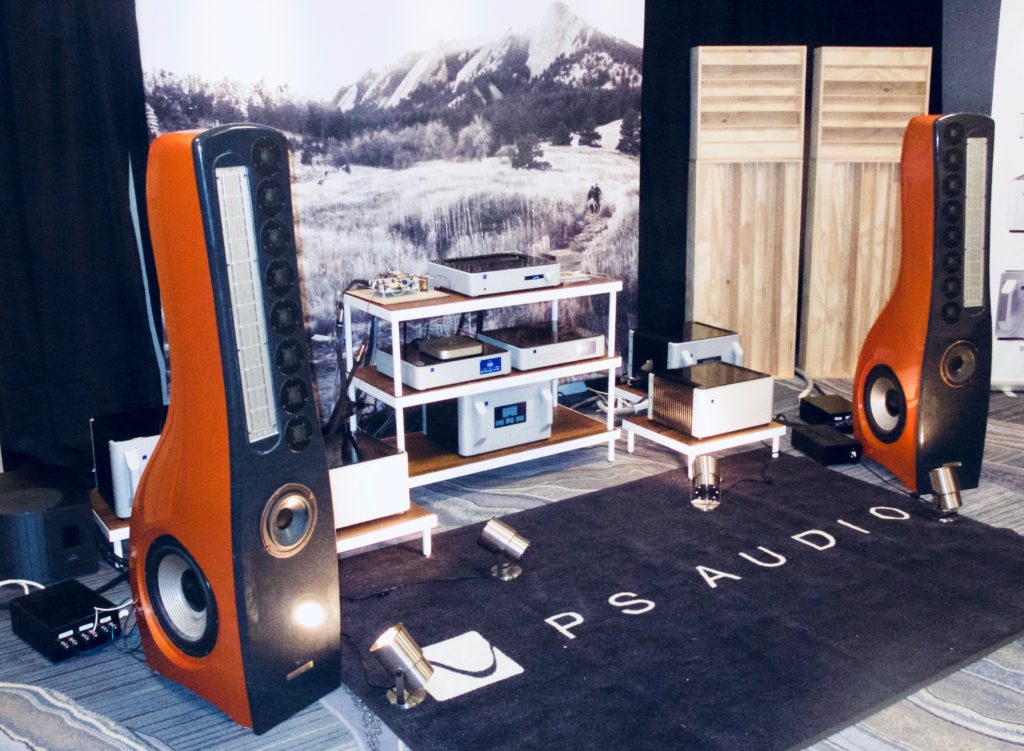
For many including me, this was the most anticipated room at the show. The room featured the late Arnie Nudell’s final prototype loudspeaker, which currently doesn’t have a name. Nudell was the founder of both Infinity Speakers and Genesis Advanced Technologies. I loved so many of his Infinity Speaker designs all the way back to the Infinity Servo-Statik 1A. This was the first room I headed to Friday morning during press hours, and it was the last room I went to on Sunday afternoon.
These prototype speakers were considerably smaller than the Infinity IRS speakers. The prototypes use dual servo-controlled woofers and a mid-bass coupler. There is a ribbon line-source midrange, and, for the top-end, they use a line-source arrangement of spiral ribbon tweeters.
According to PS Audio, this speaker will become the basis for a new line of Arnie Nudell loudspeakers from them, which they hope will debut toward the end of 2019. Paul McGowan, the “P” in PS Audio and one of the founders, said he plans three models, the smallest of which will be similar to the ones you see here. He projects the price will be around $10,000/pair, with larger models in the $20,000/pair and $50,000/pair ranges. If you can get these speakers for anywhere near $10,000, they will be a steal.
They were playing files and music downloaded from Qobuz played through a Mac mini set up with Audirvana. The system included PS Audio’s DirectStream Memory Player for $5,999 with their DirectStream DAC for another $5,999. The amplification was the PS Audio BHK Signature preamplifier for again $5,999 and the BJK Signature 300 mono amplifiers for $14,998 for the pair. They were also using two PS Audio P20 Power Plants at $9,999 each.
This room wasn’t ideal for bass, and a few people commented that the bottom notes were missing, but it didn’t bother me. I loved the midrange and top-end. The sound was transparent, relaxed and had great tone. I can’t wait to hear the final versions.
Musical Surroundings Room
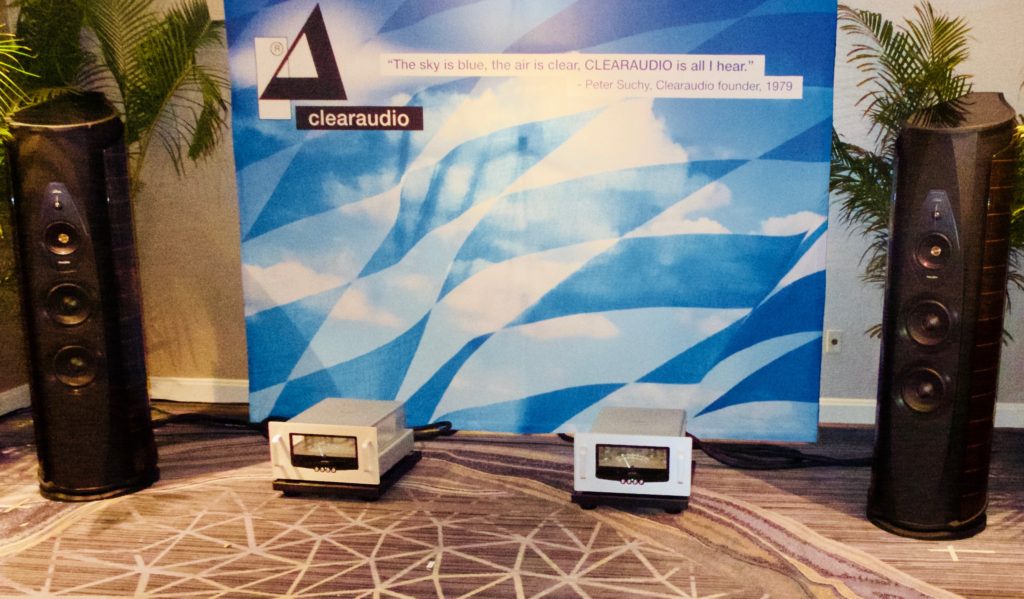
In the Musical Surroundings room, they were providing the source components from Clearaudio, DS Audio, and Hana. From Clearaudio, there was an Innovation turntable in piano white lacquer with their nine-inch Universal tonearm in silver for $17,250 and supported on their turntable stand at $15,500. The Goldfinger Statement phono cartridge is $16,000, and the rest of the turntable accessories included a Statement LP clamp for $1,000, an Outer Limit peripheral record clamp for $1,350 and Clearaudio’s Absolute Current Mode Phono Stage for $15,000.
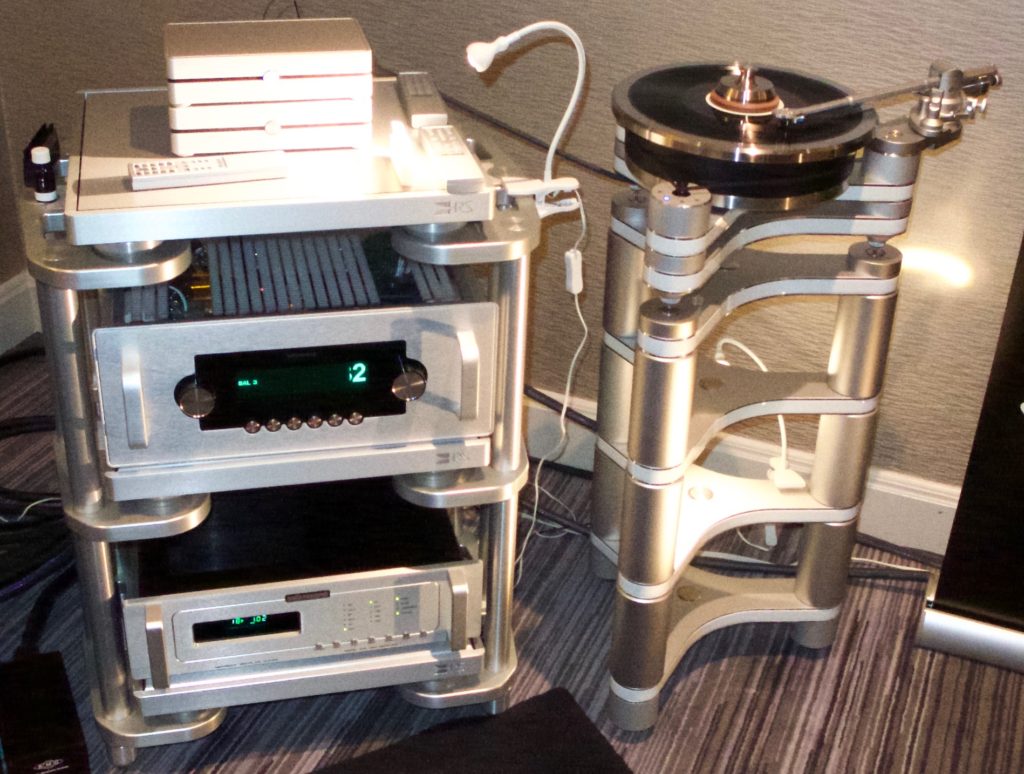
The other analog source that Musical Surrounding brought consisted of an AMG Viella V12 Doppio turntable complete with both an AMG 12J2 and a AMG 12JT Turbo tonearm for $29,250, an AMG Turbo tonearm cable for $2,250 and an AMG Reference tonearm cable for $1,500. From DS Audio, there was the Master1 optical phono cartridge and the Master1 EQ/Phono Stage at $22,500. I loved the sound of both vinyl sources, but the second one was simply divine. Of course, I may be prejudiced since it is the source I have in my own system. Mounted on the 12/J2 tonearm was the new Hana ML MC cartridge that will sell for $1,200.
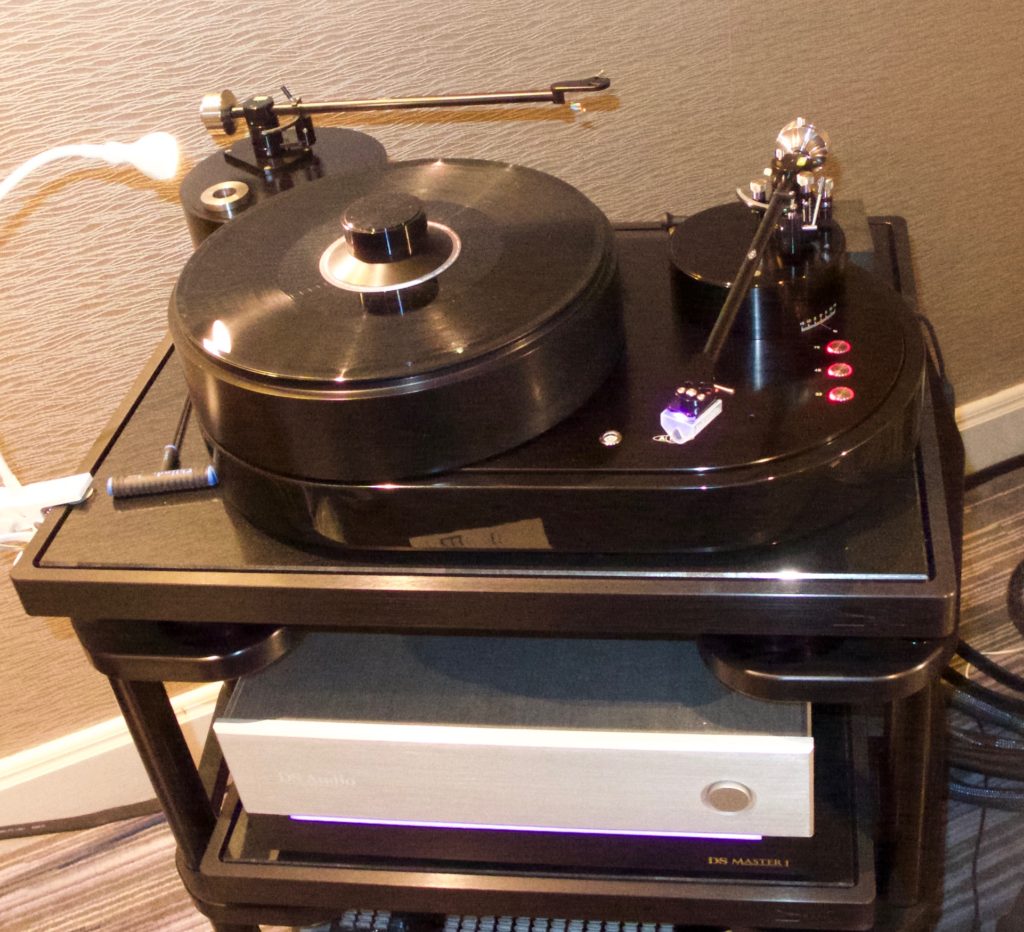
To show off their source components, Musical Surroundings had partnered with Audio Research using their Ref 160M mono amplifiers for $30,000 per pair and their Reference 6 line stage at $14,000. The speakers were from Sonus Faber who had chosen to send their Aida loudspeakers, which go for $130,000 for a pair. The four-way floor standing speaker has a one-inch damped-apex silk-dome tweeter and a seven-inch natural-fiber midrange, two nine-inch sandwich-cone woofers and a twelve and a half inch nano-carbon-fiber/foam-core subwoofer. There was also what they referred to as a rear-firing “Sound Field Shapers” that consisted of another one-inch damped-apex silk-dome tweeter and two three-inch midrange drivers. The system’s cables were by Kubala Sosna, and everything but the Clearaudio turntable was supported by HRS stands.
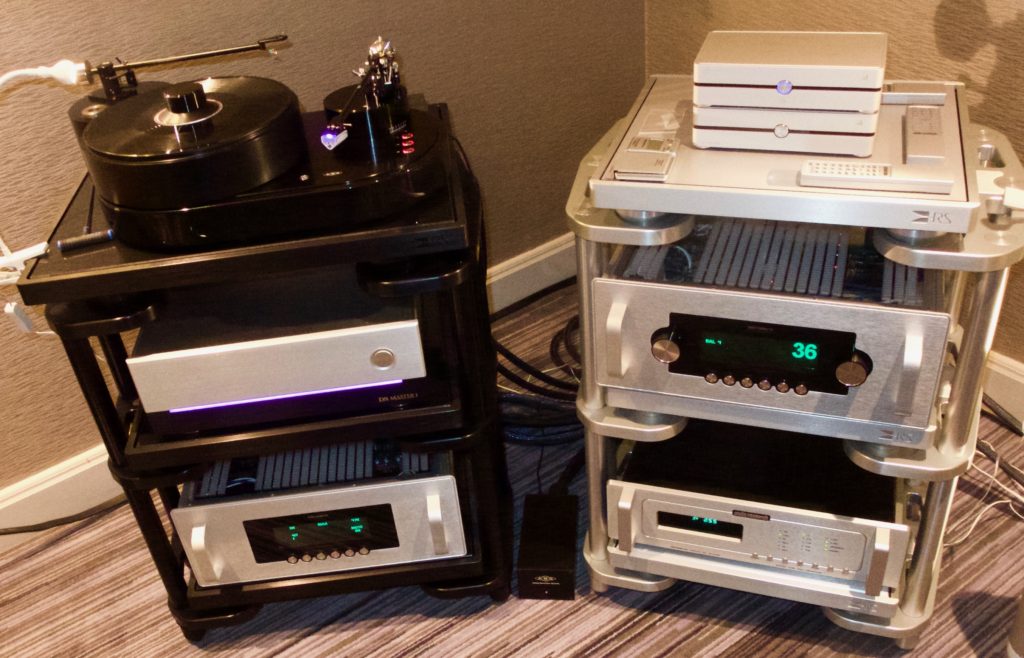
I’ve owned and been a fan of Audio Research since my first SP-3 preamp, but it’s been a while since I’ve heard anything from them that blew me away like this system. On every LP I heard from Bluegrass to classical, the sound was so beautiful and emotionally involving. The sound had rich, warm, tones without sounding overly warm. It had both amazing dynamics and micro-dynamics. The soundstage was the type I love with proper air, space and scale; a very holistic soundstage with great weight. Simply put, to me this was the best sound at the show.
TriAngle Art Room
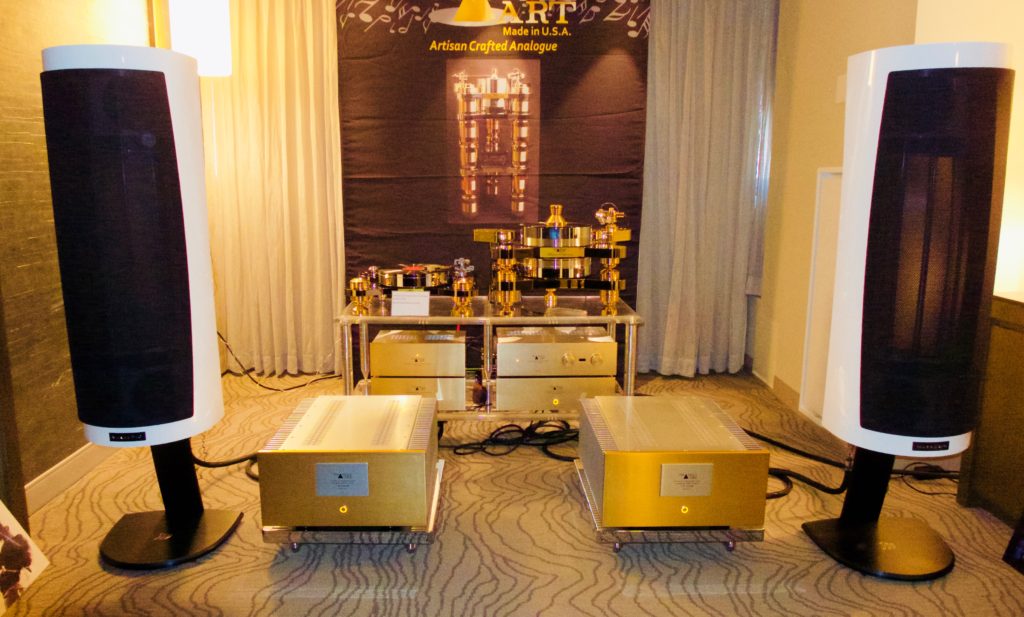
TriangleArt was using two turntables, the TriangleArt Maestro turntable for $7,500 that I reviewed earlier this year and a TriangleArt Master Reference turntable system at $39,999. They were using their Osiris MK II tonearms for $6,890, and the Apollo cartridges at $8,000 each. The electronics were the TriangleArt Reference Tube Phono stage for $12,998 and the TriangleArt Reference Tube preamp at $18,998. The amps were the TriangleArt TA 200M pure class A monoblocks, $73,000 for the pair. The cables were the TriangleArt Rhea Reference cable system.
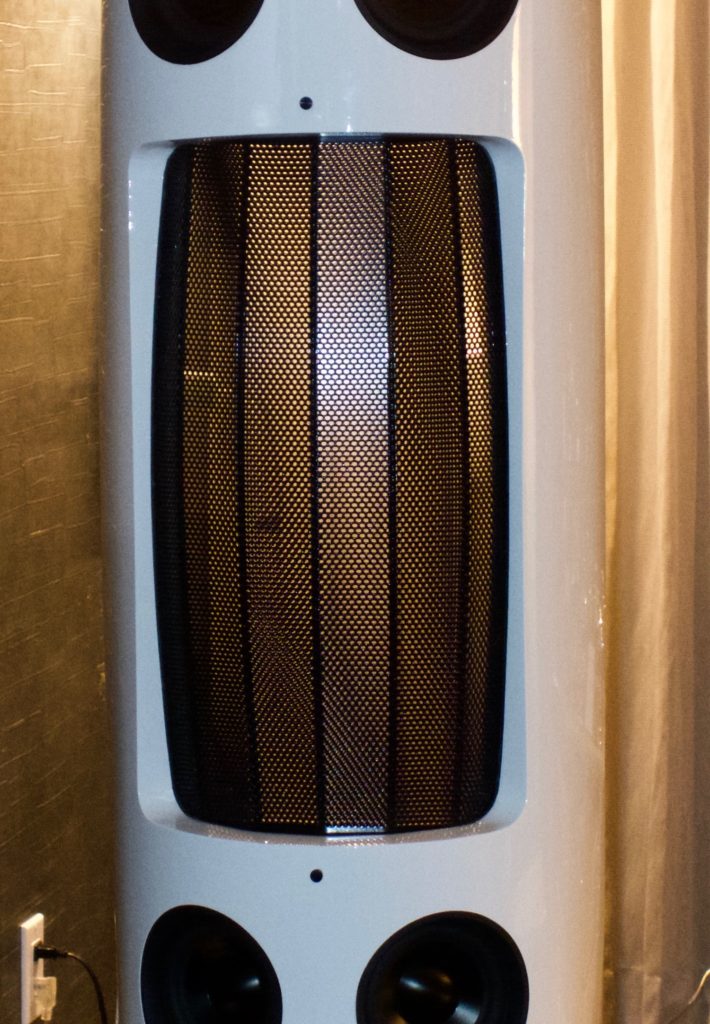
Tom Vu, owner of TriangleArt, had partnered with Muraudio to use their SP1 Electrostatic Loudspeakers in this system. I really like these speakers more each time I hear them.
The combination of these electrostatic speakers driven by these big class A amps, the tube preamps and phono preamp with the all TriAngle Art vinyl system produced a beautiful sound on all kinds of music.
Both male and female voices were very natural, articulated and alive sounding. This system had the ability to make me feel like there was a human body present behind the voices. Voices and instruments, especially solo instruments, sounded spooky real.
When listening to the Living Stereo recording of the “London Symphony’s performance of Rimsky Korsakov’s Capriccio Espagnol,” I was struck by the sheer beauty of the recording. This system carried the flow of the music through the bass line and the strings sounded airy and colorful. The orchestra was spread across the whole room, and the music floated much like it does when hearing a live symphony. This system sounded great playing symphonic music, jazz, and rock. It was truly a system that sounded like music.
